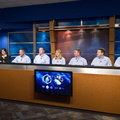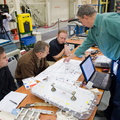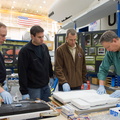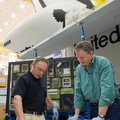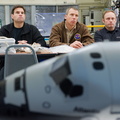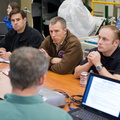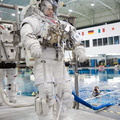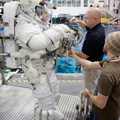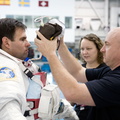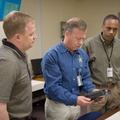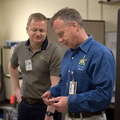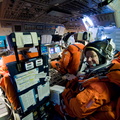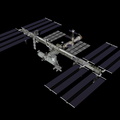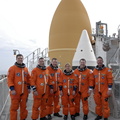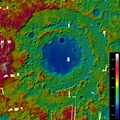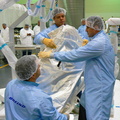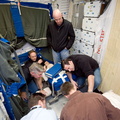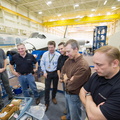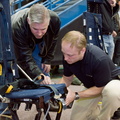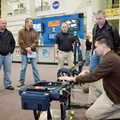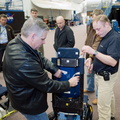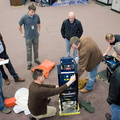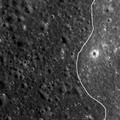
WIKIARCHIVES.SPACE
The Human Spaceflight Archive

A lobate scarp in the mare basalts of Aitken crater on the lunar farside (arrows). Aitken crater is one of the fifty regions of interest in NASA's Constellation Program. The smooth mare basalts that flooded the floor of Aitken crater are relatively few on the lunar farside. Mare basalts often have wrinkle ridges and lobate scarps, tectonic landforms that express contraction of the volcanic flows. Future astronauts who might visit Aitken crater will explore this landform in search of clues to how this and other lobate scarps form. Image width is 4.5 km, NAC frame M103374879RE.
Information
- Taken in
- Fotograf
- NASA/GSFC/Arizona State University
- Skildring
-
A lobate scarp in the mare basalts of Aitken crater on the lunar farside (arrows). Aitken crater is one of the fifty regions of interest in NASA's Constellation Program. The smooth mare basalts that flooded the floor of Aitken crater are relatively few on the lunar farside. Mare basalts often have wrinkle ridges and lobate scarps, tectonic landforms that express contraction of the volcanic flows. Future astronauts who might visit Aitken crater will explore this landform in search of clues to how this and other lobate scarps form. Image width is 4.5 km, NAC frame M103374879RE.
NASA's Goddard Space Flight Center built and manages the mission for the Exploration Systems Mission Directorate at NASA Headquarters in Washington. The Lunar Reconnaissance Orbiter Camera was designed to acquire data for landing site certification and to conduct polar illumination studies and global mapping. Operated by Arizona State University, the LROC facility is part of the School of Earth and Space Exploration (SESE). LROC consists of a pair of narrow-angle cameras (NAC) and a single wide-angle camera (WAC). The mission is expected to return over 70 terabytes of image data.
- Oppretta
- Tysdag 12 Januar 2010
- Album
- US SPACE PROGRAM / PROBES / MOON / LRO/LCROSS / Annoted/Science
- Source link
- https://photojournal.jpl.nasa.gov
- Visingar
- 20
- Rangering
- ingen rangering
- Ranger dette bilete
- License
- Public Domain
- Modified by WikiArchives
- No (original)
- Nedlastingar
- 0
Driven av Piwigo










